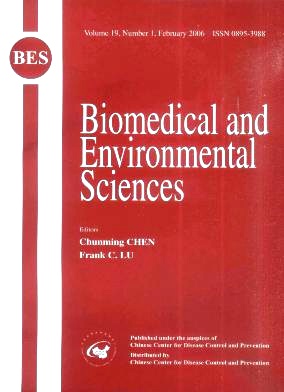Abnormal Expression of Eukaryotic Translation Factors in Malignant Transformed Human Bronchial Epithelial Cells Induced by Crystalline Nickel Sulfide
-
Key words:
- Nickel compounds /
- Human cells /
- Transformation /
- Translation factors /
- Fluorescent quantitative PCR
Abstract: Objective To study the oncogenic potential of mouse translation initiation factor 3 (TIF3) and elongation factor-1δ (TEF-1δ) in malignant transformed human bronchial epithelial cells induced by crystalline nickel sulfide (NiS). Methods Abnormal expressions of human TIF3 and TEF-1δ genes in two kinds of NiS-transformed cells and NiS-tumorigenic cell lines were investigated and analyzed by the reverse transcript polymerase chain reaction (RT-PCR) and fluorescent quantitative polymerase chain reaction (FQ-PCR), respectively. Results RT-PCR analysis primarily showed that both human TIF3 and TEF-1δ mRNA expressions in two kinds of NiS-transformed cells and NiS-tumorigenic cell lines were increased as compared with controls. FQ-PCR assay showed that the levels of TIF3 expressions in the transformed cells and tumorigenic cells were 3 and 4 times higher respectively, and the elevated expressions of TEF-1δ cDNA copies were 2.7- to 3.5-fold in transformed cells and 4.1- to 5.2-fold in tumorigenic cells when compared with non-transformed cells, indicating that the over-expressions of human TIF3 and TEF-1δ genes were related to malignant degree of the cells induced by nickel. Conclusions These findings demonstrate that there are markedly abnormal expressions of TIF3 and TEF-1δ genes during malignant transformation of human bronchial epithelial cell lines induced by crystalline NiS. They seem to be the molecular mechanisms potentially responsible for human carcinogensis due to nickel.
| Citation: | YI-XIONG LEI, XUE-MIN CHEN, GEN-RONG WU, JIA-KUN CHEN. Abnormal Expression of Eukaryotic Translation Factors in Malignant Transformed Human Bronchial Epithelial Cells Induced by Crystalline Nickel Sulfide[J]. Biomedical and Environmental Sciences, 2006, 19(1): 53-60. |







 Quick Links
Quick Links
 DownLoad:
DownLoad: